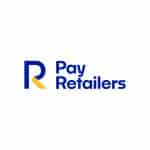There’s no such thing as a one-size-fits-all approach to fraud prevention. And eCommerce shops that sell expensive items often have a set of needs that aren’t met by many fraud prevention solutions on the market today.
Ecommerce merchants with high Average Order Values (AOV) are typically far more risk-averse when it comes to fraud prevention. They also deal with buying patterns and customer experience expectations that are different than stores with lower-priced products. Therefore, their fraud prevention strategies and solutions should reflect those priorities.
How price impacts buyer expectations
While retail giants like Amazon set the benchmark of consumer expectations for perks like low shipping times, shopper expectations are a bit different for more expensive purchases.
Keep in mind that while many of us associate “expensive items” with luxury goods, this also applies to items like furniture, exercise equipment, auto parts, electric scooters, construction equipment, and more!
Traditionally, it was more common for buyers to purchase these types of items in-store. Years ago, experts were skeptical that anyone would be confident enough to buy a sofa without seeing it in person! But now, purchasing expensive items online is commonplace.
Yet, consumer behaviors are different when making a “considered purchase” vs. an impulse purchase. Buyers will spend much longer comparing brands, vendors, models, and so on before making their decision. Therefore, convenience factors like low shipping times tend to have less impact on their choices than other aspects of their purchase.
For example, if you’re planning to purchase a $4000 e-bike that you’ve spent months budgeting for and weeks comparing models, you will be more willing to fill out a complicated checkout form and wait a couple of weeks for the item to arrive than you would be for a $20 t-shirt.
Why fraud prevention isn’t one-size-fits-all
In a perfect world, fraud software and analysts would be able to make instantaneous decisions with perfect accuracy for every order. However, that is not the world we live in. Therefore, businesses need to make decisions about which metrics are most important to them.
For instance, is maximizing order approval rates the most important metric? Or is it “good enough” that some predictable approval threshold (say 98%) is met? Is it essential to meet shipping SLAs 100% of the time? Or are you willing to delay shipping for high-risk orders if it means getting more accurate decisions? These are all tradeoffs that businesses owners need to evaluate.
Every eCommerce business has its priorities and tradeoffs that can affect how they approach their fraud prevention strategy. Questions like:
- What percentage of my orders should be escalated for review? How many internal resources should I dedicate to fraud review?
- How conservative or aggressive should I be in approving or declining orders on suspicion of fraud?
- What is the maximum amount of time an order should stay in the review stage before an approve or decline decision is made?
- What tactics should I use to verify customers in real-time?
Fraud Prevention for High AOV Businesses
For businesses that primarily sell high-priced items, the top fraud prevention priorities tend to be:
- Reduce chargebacks as much as possible (or eliminate them using a fraud service with a chargeback guarantee)
- Decision accuracy is more important than strict review timelines (within reason)
- Verification tactics are acceptable if they improve decision accuracy
We’ll go into each of these in the sections below:
Reduce chargebacks as much as possible
For businesses with items that are expensive to manufacture and produce, every single order counts. When you factor in material costs, assembly, and shipping, even a few chargebacks a month can be costly, especially for small- to mid-sized businesses that rely on a smaller volume of high-priced orders to meet their revenue goals.
For these companies, a fraud prevention solution with a chargeback guarantee can be a lifesaver. Because fraud attacks are often sudden and unpredictable, this type of solution can introduce more predictability to your costs and give you peace of mind that you’re not shipping out good products to bad actors.
Decision accuracy is more important than strict review timelines
Fraud false positives are an invisible cost that often outweighs the cost of chargebacks. For high-value transactions, automated fraud prevention solutions may not be inclined to approve these transactions if they present any risk factors because they may consider them too risky to ship. Unfortunately, this often means that companies with high AOVs end up with more false declines than other product categories.
On the other hand, metrics like decision timeframes and shipping SLAs, while very important, are less critical for expensive, considered purchases than impulse buys.
Therefore, these businesses should seek out fraud prevention solutions specializing in paying close attention to high-risk orders. Companies like NoFraud utilize a large dedicated team of fraud analysts. So rather than over-relying on automated decision-making (although >99.5% of decisions are automated), by performing proactive review on high value and high risk transactions, they can approve more of these orders with confidence, even if there are some risk factors detected.
By escalating more orders for review, this can cause a slight delay while these orders are evaluated. However, for businesses with high Average Order Values, the increased order approval rates and decision accuracy usually outweighs this downside, especially if the review times are within a reasonable timeframe (say 24-48 hours).
Verification tactics are acceptable if they improve decision accuracy
The best way to improve decision accuracy as much as possible is to introduce real-time verification tactics. This can include emails, text, and even image requests to validate that the person making the purchase is, in fact, the actual cardholder.
While the vast majority of orders do not require this type of verification (less than 0.1%), having these techniques in your back pocket can help you approve risky-yet-legitimate orders which you may be otherwise inclined to deny.
For expensive purchases, legitimate buyers are more likely to respond to these verification requests. They may even be grateful that you take security so seriously.
Choose the Right Fraud Prevention Strategy for your Expensive Items
Whether your business is jewelry or HVAC equipment, if your business primarily sells expensive items, it’s important to choose a fraud prevention strategy that balances the need for accurate decision making and customer experience. By selecting a fraud prevention partner who understands these dynamics and is willing to go the extra mile to closely review and validate high-priced orders rather than auto-decline them, you will be setting yourself up for success.
To learn more about NoFraud’s fraud prevention solution, visit nofraud.com





























